Most people don’t give much thought to their calf workouts, doing just a few perfunctory sets of calf exercises at the end of their leg workout each week.
Training like this will never build standout calves, though.
To see real results, you have to understand how to train your calves to build mass, which exercises to do, and how to put everything together into effective workouts.
In this article, you’ll learn exactly how to do all of this.
Table of Contents
+
Training Tips for Building Calf Mass
The calves comprise two muscles: The gastrocnemius and the soleus. Both muscles help you point your toes (plantar flexion)
Here’s how they look:
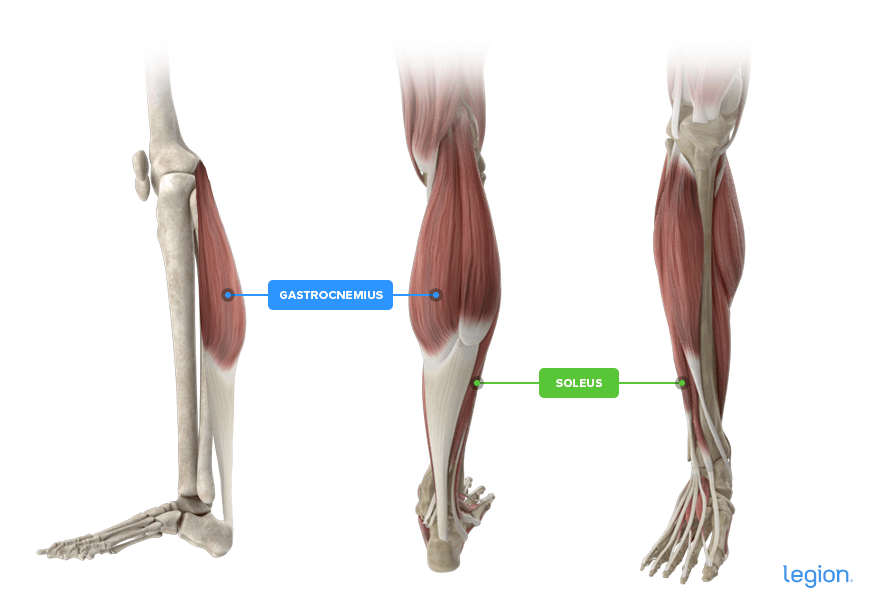
An important difference between these muscles is how bending your knees affects them. Bending your knees reduces tension in the gastrocnemius and increases it in the soleus. The opposite occurs when you straighten your knees.
As such, certain calf exercises train these muscles differently. For instance, exercises performed with bent legs don’t effectively train the gastrocnemius because it can’t fully contract in this position. Likewise, when you do calf exercises with straight knees, the gastrocnemius is more involved than the soleus.
So, if you want to maximize your calf muscles’ size and strength, you need to do calf exercises with your knees bent and straight.
The Best Calf Workout for Mass
Here’s a short and sweet calf workout for mass you can put into practice right away:
- Choose two calf exercises from the list below (ideally, one with bent knees and one with straight knees).
- Do them for the prescribed number of sets and reps at the end of two of your workouts each week (most people like to tack them onto the end of lower body or pulling workouts).
- Do these calf workouts for 8-to-12 weeks before choosing two new exercises and repeating the process.
For example, let’s say you choose the leg press calf raise and the seated calf raise machine as your first two calf exercises.
At the end of your Tuesday pull workout, you’d do 3 sets of 6-to-8 reps on the leg press calf raise, then 3 sets of 10-to-12 reps on the seated calf raise machine.
At the end of your legs workout on Thursday, you’d repeat the same calf workout you did on Tuesday: 3 sets of 6-to-8 reps on the leg press calf raise, then 3 sets of 10-to-12 reps on the seated calf raise machine.
Use double progression to add reps and then weight in every workout for 8-to-12 weeks, then take a deload week, swap your previous calf exercises for two different exercises from the list below, and repeat the process for another 8-to-12 weeks.
The Best Calf Exercises for Mass
1. Seated Calf Raise Machine
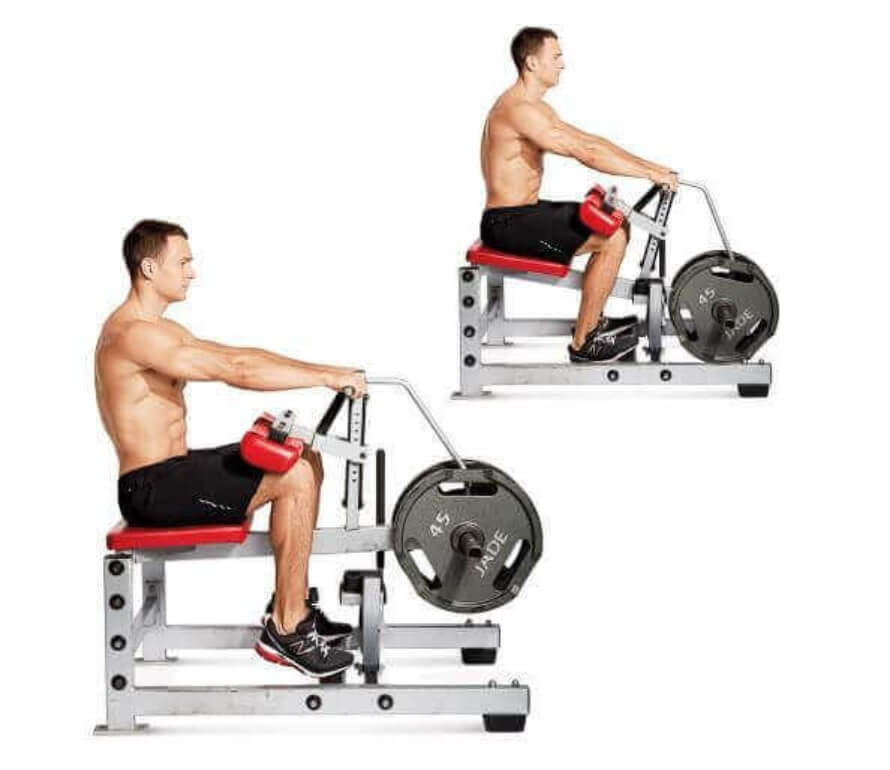
The seated calf raise machine trains your entire calf but emphasizes your soleus. The soleus contributes more than the gastrocnemius to the overall size of your calves, which makes the seated calf raise machine one of the best calf exercises for mass.
- While seated, adjust the thigh pad so that it rests just above your knee and place the balls of your feet on the footplate.
- Lift the pad slightly by pointing your toes, and use the safety handle to release the weight.
- While keeping your feet on the footplate, lower the weight as far as possible by lowering your heels toward the floor.
- Push through the balls of your feet to elevate the thigh pad as high as you can, and then lower your heels to return to the starting position.
Reps: 10-to-12
Sets: 3
Rest: 2-to-3 min
2. Leg Press Calf Raise
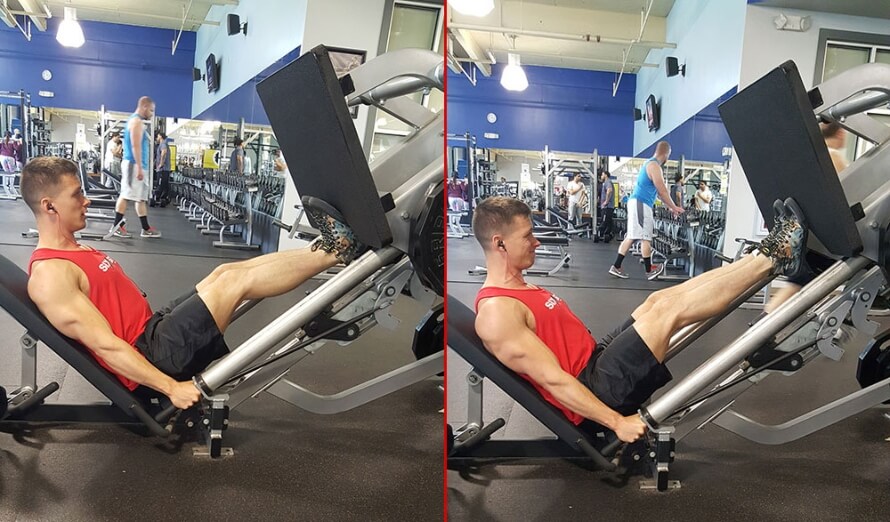
The leg press calf raise is easy to set up and load with heavy weights, which makes it ideal for building mass and strength in your calves.
- Sit in the leg press machine seat and wedge your butt down into the base of the seat.
- Place your feet shoulder-width apart and toward the bottom of the footplate so that the balls of your feet are touching the footplate, but the rest of your foot hangs off the bottom.
- Using your legs, press the footplate away from your body and use the safety handles to release the weight.
- While keeping a slight bend in your knees, lower the footplate toward your chest by allowing the weight to push your toes toward your shins.
- When you feel a deep stretch in your calf muscles, push the footplate away from you by forcefully pointing your toes.
Reps: 6-to-8
Sets: 3
Rest: 2-to-3 min
3. Standing Barbell Calf Raise

The standing barbell calf raise is a good calf exercise for when you have limited equipment. However, it requires a lot of balance and coordination, so it’s best to use lighter weights and higher reps.
- Position a barbell in a squat rack at about the height of your nipples and place a calf raise block, step, or weight plate on the floor two-to-three feet in front of the squat rack.
- Step under the bar, pinch your shoulder blades together, and rest the bar directly across your upper traps.
- Lift the bar out of the rack, take one or two steps backward taking care not to trip on the calf raise block, and place the balls of your feet on the block.
- Raise your heels as high as possible by pushing through the balls of your feet.
- Lower the weight as far as possible by lowering your heels toward the floor.
Reps: 15-to-20
Sets: 3
Rest: 2-to-3 min
4. Standing Calf Raise Machine
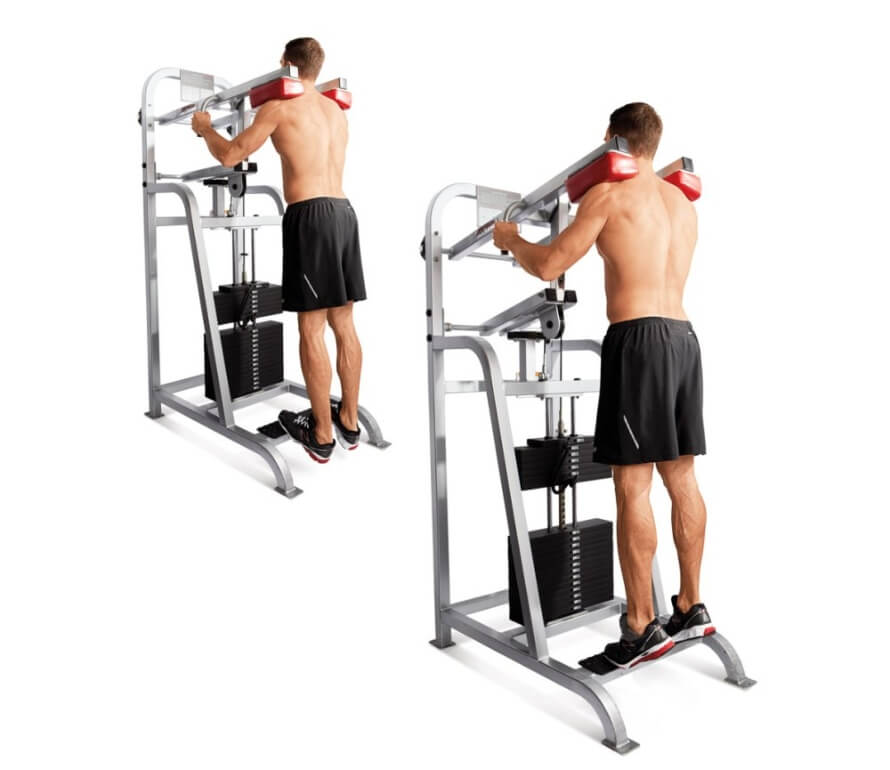
The standing calf raise machine adds overall mass to your calves. Because you perform it with straight legs, though, it emphasizes your gastrocnemius, which means it’s particularly good for developing the shape and appearance of your calves.
- Place the balls of your feet on the footplate and crouch slightly so that the shoulder pads rest on your shoulders.
- Stand up straight so that your body is supporting the weight.
- While keeping the balls of your feet on the footplate, lower the weight as far as possible by lowering your heels toward the floor.
- Push through the balls of your feet to elevate the shoulder pads as high as you can, and then lower your heels to return to the starting position.
Reps: 10-to-12
Sets: 3
Rest: 2-to-3 min
5. Standing Dumbbell Single-Leg Calf Raise
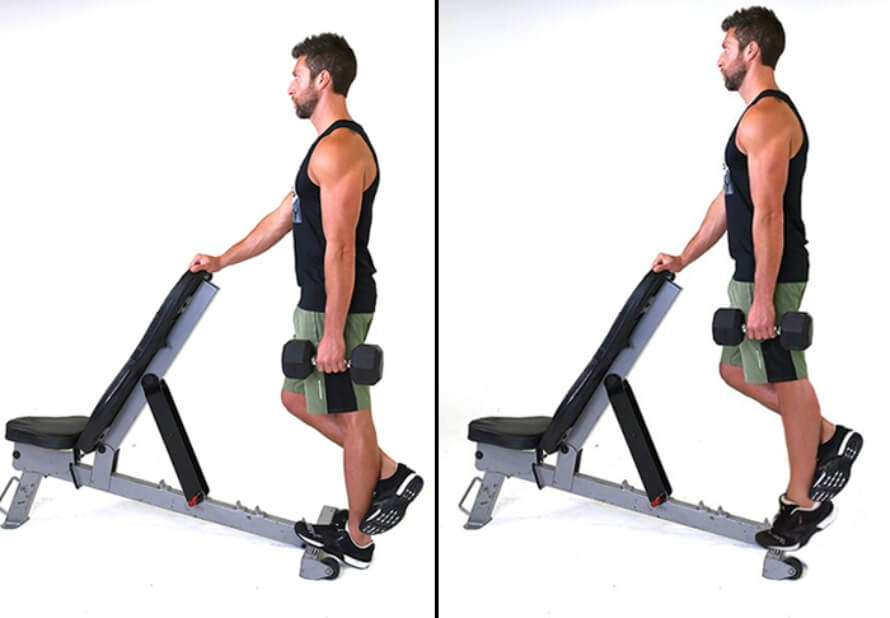
Because the standing dumbbell single-leg calf raise trains just one leg at a time, it’s useful for finding and fixing muscle or strength imbalances. However, because it requires more balance and coordination than other calf exercises, it’s best to use lighter weights and work in a higher rep range.
- Position a calf raise block, step, or weight plate near a squat rack, or adjust a bench to between 45 and 60 degrees and stand behind it, then grab a dumbbell in your left hand.
- Hold the squat rack or the top of the bench (where your head normally goes) with your right hand for support, and place the ball of your left foot on the calf raise block or the base of the bench.
- Bend your right knee and lift your right foot off the floor.
- Raise your left heel as high as possible by pushing through the ball of your left foot.
- Lower the weight as far as possible by lowering your left heel toward the floor.
- Once you’ve completed the desired number of reps, switch sides and repeat the process with your right leg.
Reps: 12-to-15
Sets: 3
Rest: 2-to-3 min
6. Seated Dumbbell Calf Raise
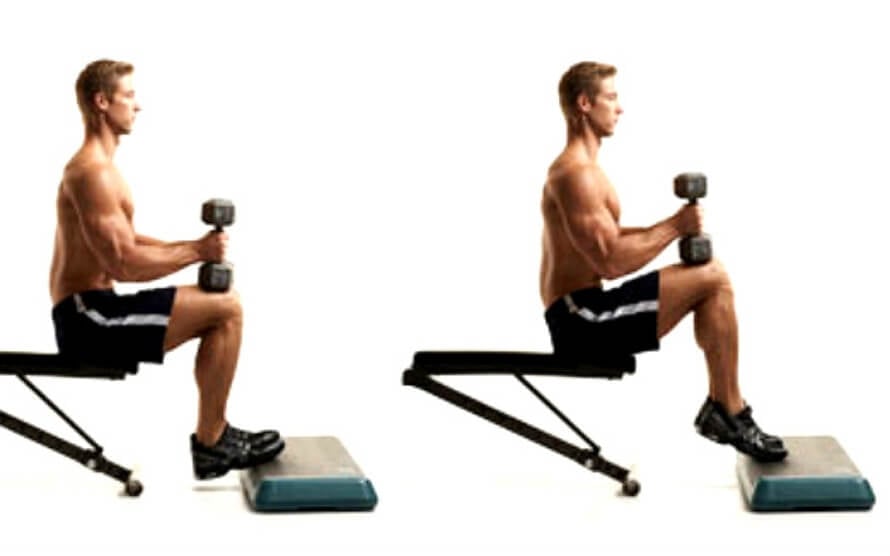
The seated dumbbell calf raise is a solid calf exercise for mass because it emphasizes your soleus. It also requires minimal equipment, so it’s a great option if you train in a home gym.
- Position a calf raise block, step, or weight plate about 12-to-18 inches away from a bench.
- While holding a dumbbell in each hand, sit on the bench, place the dumbbells on your thighs, and position the balls of your feet on the edge of the calf raise block.
- Lower the weights as far as possible by lowering your heels toward the floor.
- Raise your heels as high as possible by pushing through the balls of your feet, and then lower your heels to return to the starting position.
Reps: 15-to-20
Sets: 3
Rest: 2-to-3 min
7. Donkey Calf Raise
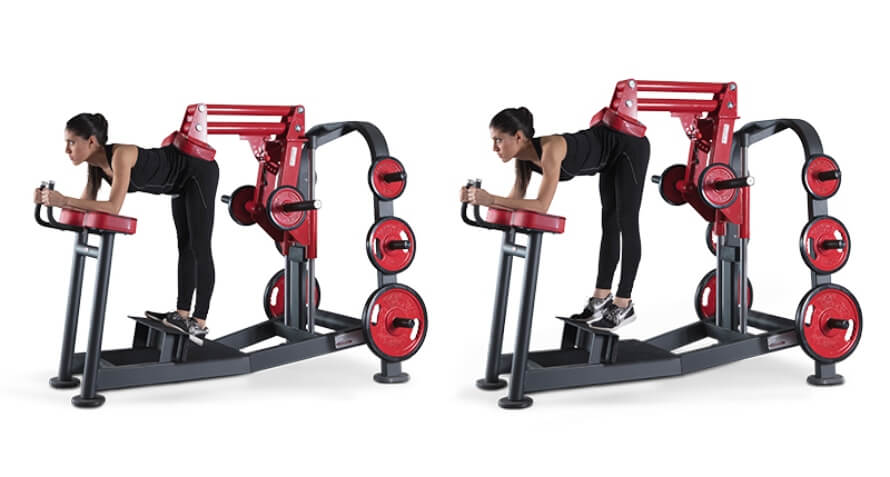
The donkey calf raise trains your calves while stretched, making it highly effective for building calf muscle.
- Position yourself in the donkey calf raise machine with your elbows on the elbow pad, the balls of your feet in the footplate, and the back pad on your lower back.
- Lower the weights as far as possible by lowering your heels toward the floor.
- Raise your heels as high as possible by pushing through the balls of your feet, and then lower your heels to return to the starting position.
Reps: 10-to-12
Sets: 3
Rest: 2-to-3 min
8. Bodyweight Single-Leg Calf Raise

Bodyweight single-leg calf raises are a good calf builder if you’re new weightlifters or don’t have access to gym equipment. Because there’s no external weight involved, it’s best to use a high rep range and short rest periods and try to take each set close to muscular failure
- Place a calf raise block, step, or weight plate near something sturdy that you can use as a support (a squat rack or an adjustable bench set at 70-to-90 degrees work well).
- Place the ball of your left foot on the calf raise block and take hold of the support with your left hand.
- Raise your right foot off the floor by bending your knee.
- Raise your left heel as high as possible by pushing through the ball of your left foot.
- Lower your body as far as possible by lowering your left heel toward the floor.
- Once you’ve completed the desired number of reps, switch sides and repeat the process with your right leg.
Reps: 10-to-30
Sets: 3
Rest: 1-to-2 min
9. Smith Machine Calf Raise
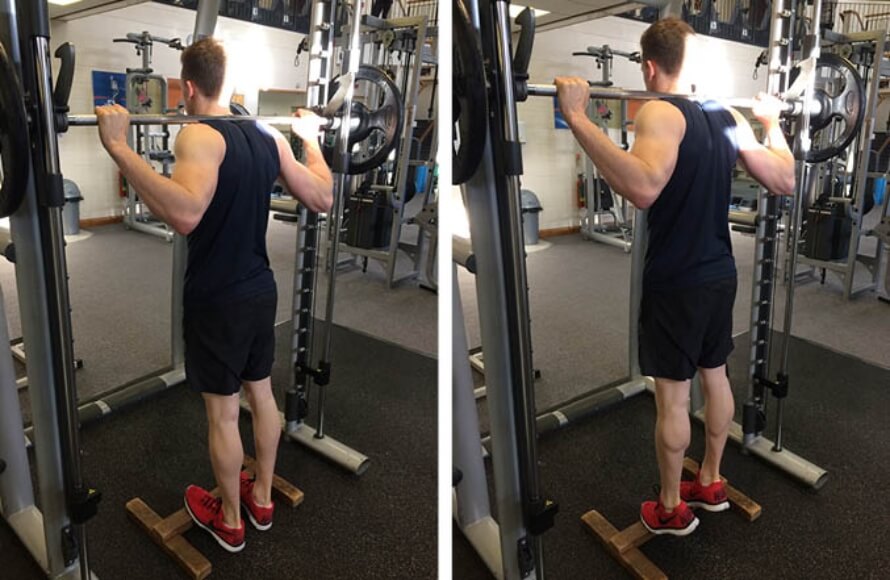
The Smith machine calf raise trains your calves in a similar way to the standing barbell calf raise. Since the bar on the Smith machine can only move up and down, though, it doesn’t require as much balance, which allows you to lift more weight and progress faster, which benefits muscle growth.
- Set the bar on a Smith machine at about the height of your nipples and place a calf raise block, step, or weight plate on the floor directly under the bar.
- Step under the bar, pinch your shoulder blades together, and rest the bar directly across your upper traps.
- Twist the bar to take it off the safety hooks, then stand up straight to lift the bar upward.
- Place the balls of your feet on the calf raise block and lower the weight as far as possible by lowering your heels toward the floor.
- Raise your heels as high as possible by pushing through the balls of your feet, and then lower your heels to return to the starting position.
Reps: 10-to-12
Sets: 3
Rest: 2-to-3 min
10. Farmer’s Walk
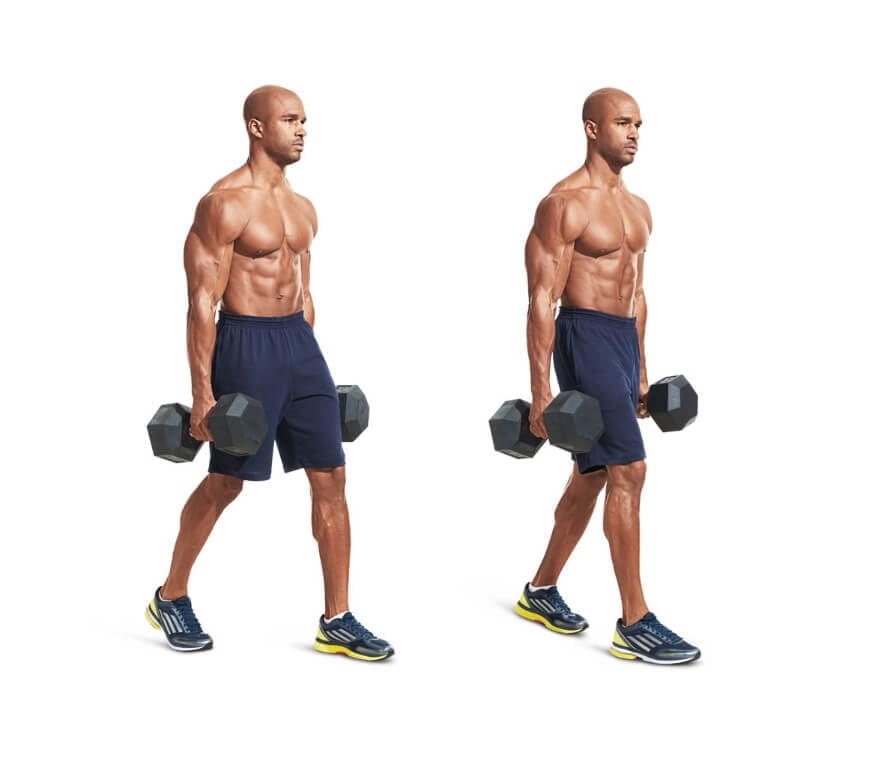
While it might not look like much, the farmer’s walk is one of the best calf exercises for mass because your calves have to work very hard to propel your body forward.
- Stand up straight and hold a dumbbell in each hand.
- Keeping your shoulder blades pulled together and down, take small, quick, even steps forward.
- If you run out of space to continue walking forward, turn around and walk back to the starting point without dropping the dumbbells.
- Walk for a set distance, a certain number of steps, or until you feel like you have to drop the dumbbells.
Reps: As many steps as possible
Sets: 3
Rest: 2-to-3 min
FAQ #1: What is the best exercise for your calves?
There’s no single “best” exercise for your calves. To fully develop your calves, doing a combination of bent- and straight-leg calf exercises works best.
FAQ #2: Are calves hard to grow?
Research shows that the calves respond about as well as any other muscle in the body to resistance training. There’s just one caveat: you have to do the “right” type of calf training for you.
Some people get the best results from high-rep training. For others, low-rep training yields better results. And in some cases, the number of reps doesn’t seem to matter.
Therefore, if your calves aren’t growing, it’s likely not because you have “poor” genetics but because you aren’t doing the “right” type of training. Experimenting with rep ranges can help with this.
For example, if you’re not seeing results from low-rep, heavy-weight workouts, switch to high-rep, lighter-weight workouts. If you usually do high-rep workouts, try low-rep sessions with heavier weights to see if that helps.
FAQ #3: Do squats grow calves?
If you’re new to weightlifting, compound exercises, such as squats, lunges, and deadlifts, are likely enough to cause calf growth. As you become more experienced, however, you need to do more direct calf training if you want to add calf mass. And that means incorporating some of the calf exercises from above into your routine.
FAQ #4: Are calf workouts for men and women the same?
Yes, there’s nothing physiologically different about men and women’s calves, so both can benefit from the same style of calf training.
FAQ #5: Can you train calves every day?
You can if you want.
Doing too much volume every day can quickly lead to overreaching and injury, though, so if you decide to do a workout for your calves every day, make sure you scale down your sets and reps.
I recommend doing just 3 sets per workout, and if your feet, knees, or Achilles tendons begin to complain, dial back your training a little.
Scientific References +
- Lauber, Benedikt, et al. “Reciprocal Activation of Gastrocnemius and Soleus Motor Units Is Associated with Fascicle Length Change during Knee Flexion.” Physiological Reports, vol. 2, no. 6, June 2014, p. e12044, https://doi.org/10.14814/phy2.12044. Accessed 13 Jan. 2020.
- Arampatzis, Adamantios, et al. “Effect of Different Ankle- and Knee-Joint Positions on Gastrocnemius Medialis Fascicle Length and EMG Activity during Isometric Plantar Flexion.” Journal of Biomechanics, vol. 39, no. 10, Jan. 2006, pp. 1891–1902, https://doi.org/10.1016/j.jbiomech.2005.05.010. Accessed 23 Apr. 2020.
- Miyamoto, Naokazu, and Shingo Oda. “Mechanomyographic and Electromyographic Responses of the Triceps Surae during Maximal Voluntary Contractions.” Journal of Electromyography and Kinesiology, vol. 13, no. 5, Oct. 2003, pp. 451–459, https://doi.org/10.1016/s1050-6411(03)00058-0.
- Fukunaga, T., et al. “Physiological Cross-Sectional Area of Human Leg Muscles Based on Magnetic Resonance Imaging.” Journal of Orthopaedic Research, vol. 10, no. 6, Nov. 1992, pp. 926–934, https://doi.org/10.1002/jor.1100100623.
- Oranchuk, Dustin J., et al. “Isometric Training and Long-Term Adaptations: Effects of Muscle Length, Intensity, and Intent: A Systematic Review.” Scandinavian Journal of Medicine & Science in Sports, vol. 29, no. 4, 13 Jan. 2019, pp. 484–503, https://doi.org/10.1111/sms.13375.
- Farris, Dominic James, and Gregory S. Sawicki. “Human Medial Gastrocnemius Force–Velocity Behavior Shifts with Locomotion Speed and Gait.” Proceedings of the National Academy of Sciences, vol. 109, no. 3, 17 Jan. 2012, pp. 977–982, www.pnas.org/content/109/3/977, https://doi.org/10.1073/pnas.1107972109.
- Schoenfeld, Brad J., et al. “Do the Anatomical and Physiological Properties of a Muscle Determine Its Adaptive Response to Different Loading Protocols?” Physiological Reports, vol. 8, no. 9, 27 Apr. 2020, https://doi.org/10.14814/phy2.14427.










